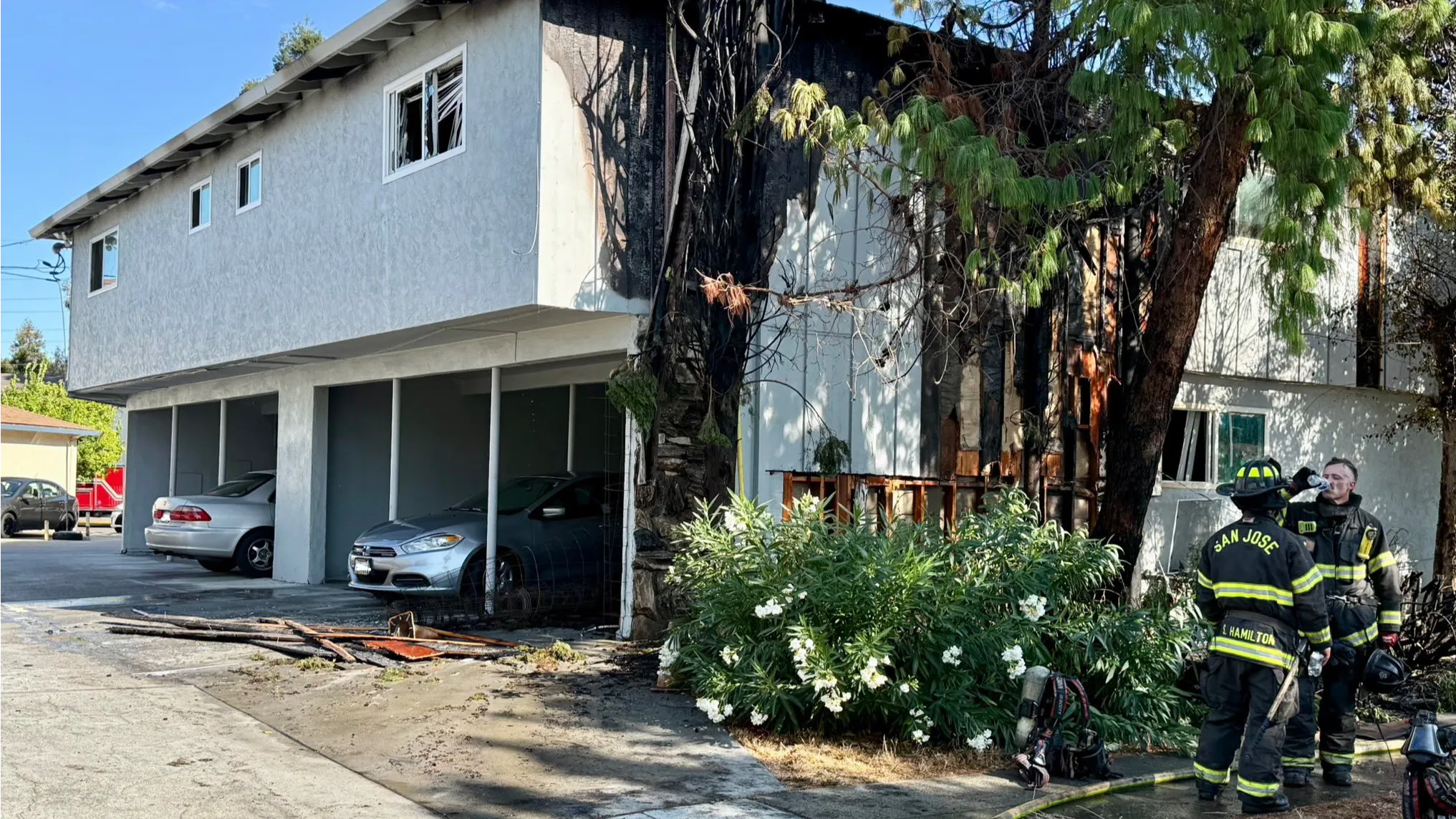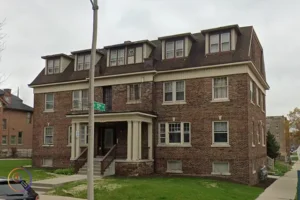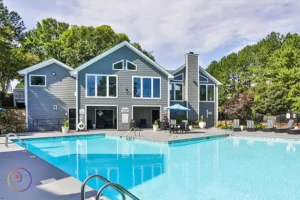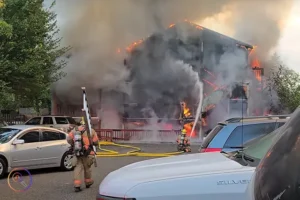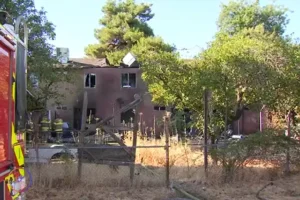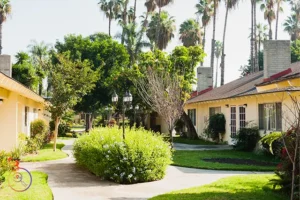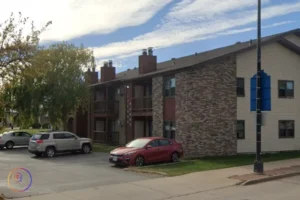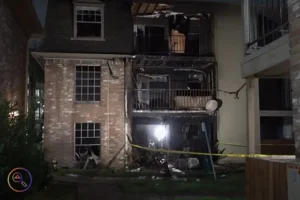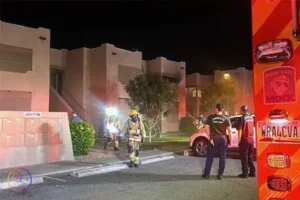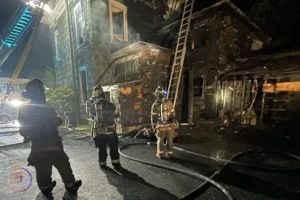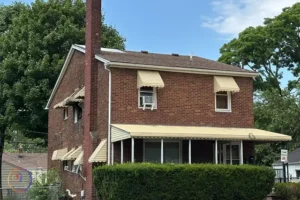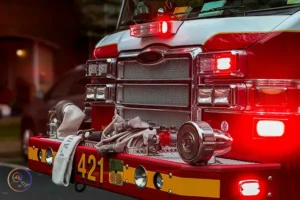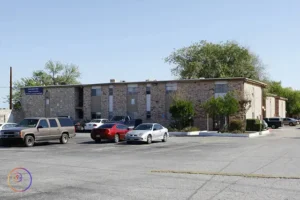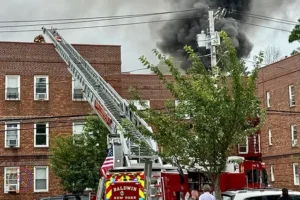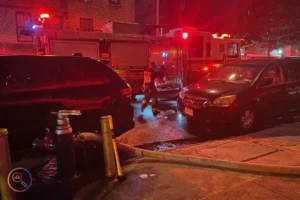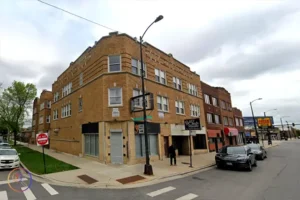Friday afternoon, September 5, in San Jose wasn’t just another late summer day. At 3:22 p.m., a large plume of smoke began curling above the Rose Glen neighborhood. Moments later, the reality was clear — a major San Jose apartment fire had broken out, and it would change the course of the day for more than a dozen residents.
This wasn’t a small incident. By the time firefighters arrived, flames had already claimed multiple units inside a two-story garden-style apartment complex on the 800 block of Deland Avenue. It would take a swift, coordinated effort to keep the blaze from spreading further — and even then, the damage was extensive.
What Happened — A Clear Timeline
The call came in at exactly 3:22 p.m. Crews from the San Jose Fire Department (SJFD) were dispatched immediately. The urgency of the situation quickly escalated, leading to a third-alarm response — a sign that multiple units and specialized teams were needed.
Firefighters fought through heavy smoke and high heat, working against time to rescue anyone still inside and contain the fire’s spread. By 4:20 p.m., the flames were officially under control. At that point, crews transitioned into salvage operations, assessing damage, preventing flare-ups, and securing the property.
Scope of Damage
The numbers tell the story:
- Four units suffered major fire, smoke, and water damage.
- All 10 apartments in the building were impacted in some way.
- Utilities were shut off to the entire complex for safety reasons.
This meant that even residents whose units were not destroyed could not return home right away. The building was, for all practical purposes, uninhabitable.
Who Was Affected?
In total, 12 adults and 1 child were displaced. Alongside them, four cats and one bird also lost their homes. For those who’ve lived through similar events, the emotional toll is as real as the physical damage.
The American Red Cross stepped in almost immediately, providing temporary housing and essential supplies for the displaced residents. It’s a reminder that during a San Jose apartment fire, the response isn’t just about putting out flames — it’s also about helping people rebuild from the moment the smoke clears.
UPDATE: Four units had majority of fire, smoke, and water damage. Utilities shut off to entire complex. One occupant removed from a unit, assessed, and released without transport. Total displacements TBD. Cause is under investigation. pic.twitter.com/Rn1Q3Rb5eG
— San José Fire Dept. (@SJFD) September 5, 2025
Emergency Response Details
From the moment the first engines arrived, this was an all-hands-on-deck operation.
The third-alarm designation meant that resources from multiple fire stations were brought in. Crews established water supply lines, conducted interior attacks on the fire, and ventilated the structure to push heat and smoke out. Simultaneously, other firefighters performed search-and-rescue sweeps, ensuring no one was left inside.
One resident was removed from a unit and assessed by medics at the scene. Fortunately, they did not require hospitalization. It’s a testament to the speed and coordination of the response that the incident ended without serious injury.
Cause Still Under Investigation
At this stage, investigators have not determined the cause or origin of the fire. While that may be frustrating for those directly affected, it’s standard practice for such investigations to take time. Specialists will analyze burn patterns, electrical systems, and any other clues that could explain how the blaze began.
For anyone living in a similar type of building, this is a moment to think about fire safety habits. Whether or not the cause here turns out to be electrical, cooking-related, or something else entirely, taking preventive measures now can save lives later.
Fire Safety Lessons for Apartment Residents
The San Jose apartment fire serves as a critical reminder that preparedness is non-negotiable. Here are specific, actionable steps every apartment resident can take:
- Check Smoke Alarms Monthly
- Make sure alarms are working in every bedroom and hallway. Replace batteries at least once a year.
- Know Your Escape Routes
- Identify at least two ways out of your unit and building. Practice exiting quickly, even in the dark.
- Avoid Overloading Outlets
- Power strips and extension cords can overheat. Spread out high-energy appliances and unplug what’s not in use.
- Have a “Go Bag” Ready
- Keep essentials like medication, IDs, and pet supplies in a single bag you can grab instantly.
- Report Electrical or Structural Concerns
- Don’t wait. If you see exposed wiring, damaged outlets, or faulty sprinklers, tell your building manager immediately.
The Human Side of the Fire
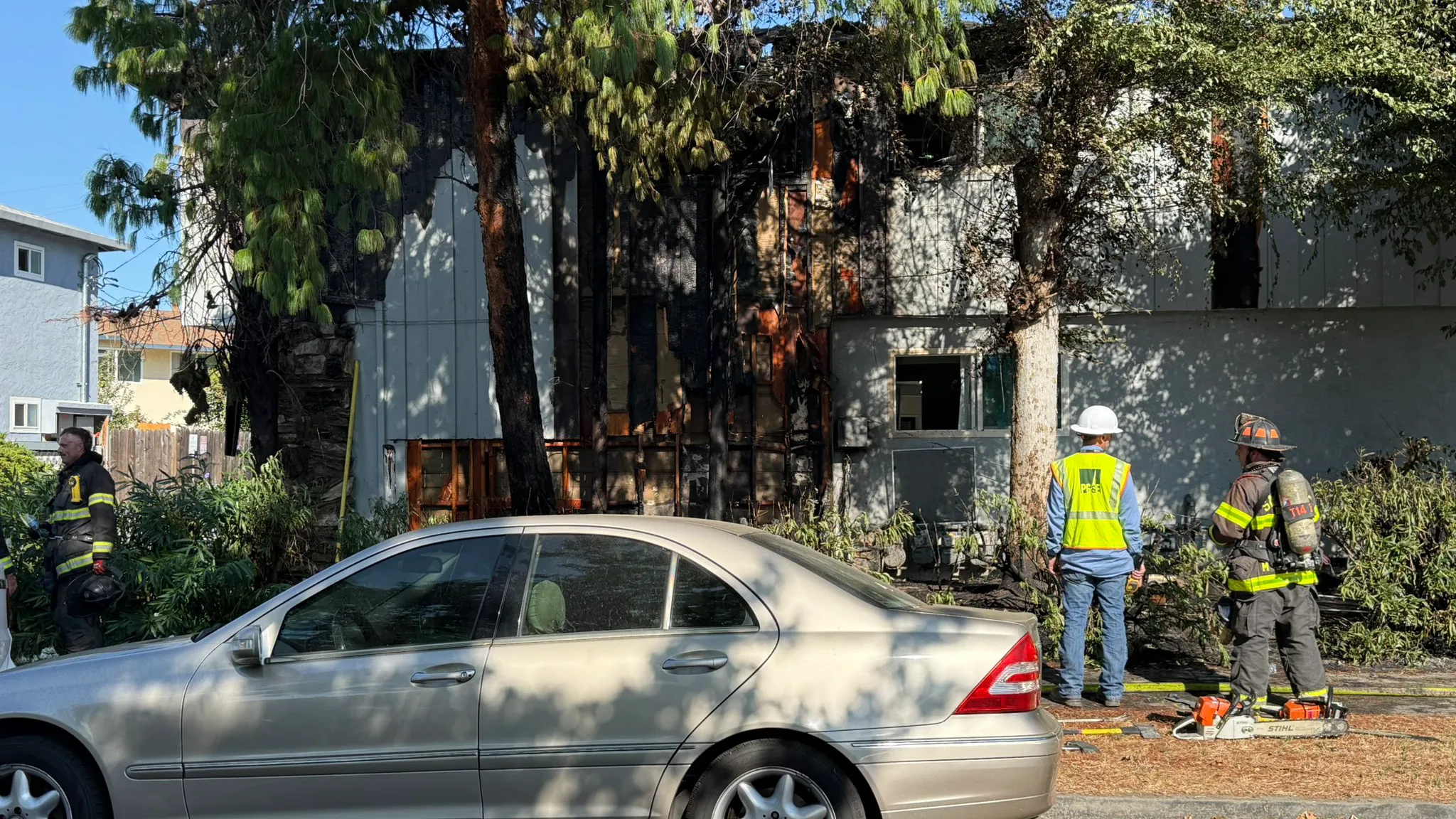
Numbers are important, but they can’t fully capture what 13 displaced people are going through right now. Imagine returning from work or school to find your home inaccessible — your belongings soaked, charred, or gone. Imagine explaining to a child why they can’t sleep in their own bed tonight.
That’s the reality for those affected by the San Jose apartment fire. The pets evacuated — four cats and a bird — are safe, but their routines are just as disrupted as their owners’.
This is where community support becomes critical. Neighbors checking in. Local businesses offering resources. Relief organizations stepping up with food, shelter, and clothing. In moments like these, the city’s resilience is tested, and San Jose tends to rise to the occasion.
Why This Fire Stands Out
Apartment fires happen in cities across the country, but several details make this one noteworthy:
- The scale of the displacement relative to the building’s size.
- The rapid escalation to a third alarm.
- The combination of human and pet evacuations.
These factors underscore just how quickly a contained situation can escalate — and how vital it is for emergency services to respond with speed and precision.
Looking Ahead
For now, the focus is on recovery. The displaced residents will be navigating insurance claims, temporary housing, and the emotional strain of displacement. The Red Cross will continue to provide immediate relief, but long-term solutions will involve property repairs and possibly rebuilding portions of the structure.
The San Jose apartment fire will also serve as a case study for local fire officials. Every incident offers lessons, whether in response times, coordination between agencies, or public communication during an active emergency.
Key Takeaways for San Jose Residents
- Fires can displace dozens of people in minutes — preparation matters.
- Having an evacuation plan can prevent chaos during emergencies.
- Community organizations play a pivotal role in disaster relief.
If you live in a multi-unit building, consider talking with neighbors about fire safety and forming a tenant safety group. Shared awareness can reduce risks and save lives.
Final Thoughts
Friday’s San Jose apartment fire was a wake-up call. It showed just how quickly a calm afternoon can shift into a full-scale emergency. But it also highlighted the bravery of firefighters, the resilience of residents, and the importance of being ready for the unexpected.
As investigators work to determine the cause, one truth remains: fire safety is everyone’s responsibility. Whether you live in a high-rise downtown or a garden-style apartment in a quiet neighborhood, the steps you take today could make all the difference tomorrow.

